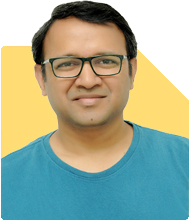Ramalingam Kalirajan |10899 Answers |Ask -Follow
Mutual Funds, Financial Planning Expert - Answered on May 18, 2024
He has an MBA in finance from the University of Madras and is a certified financial planner.
He is the director and chief financial planner at Holistic Investment, a Chennai-based firm that offers financial planning and wealth management advice.... more

Hi Team, I am 37 years old and a CTC of 16 lakhs. I am thinking of investing in mutual funds to get 2cr on retirement. Kindly advise which mutual funds i should invest
At 37 with a clear financial goal, it's essential to choose mutual funds that align with your risk tolerance and long-term objectives.
Understanding Your Financial Goals
Retirement Corpus
Seeking a ?2 crore corpus for retirement indicates a forward-thinking approach to financial planning and wealth accumulation.
Long-Term Perspective
At your age, you have a considerable investment horizon, allowing you to harness the power of compounding for wealth creation.
Assessing Investment Options
Equity Mutual Funds
Given your long-term goal, equity mutual funds offer the potential for higher returns compared to debt or hybrid funds.
Diversification
Consider diversifying your portfolio across large-cap, mid-cap, and multi-cap funds to spread risk and optimize returns.
Benefits of Active Management
Professional Expertise
Actively managed funds are overseen by experienced fund managers who make strategic investment decisions to maximize returns.
Adaptability
Fund managers can adjust portfolio holdings based on market conditions and capitalize on emerging opportunities for growth.
Disadvantages of Index Funds
Limited Upside Potential
Index funds aim to replicate the performance of a benchmark index, limiting potential for outperformance.
Lack of Flexibility
Investors are tied to the performance of the index and have limited ability to capitalize on market inefficiencies or changing trends.
Choosing Regular Funds Over Direct Funds
Benefits of Regular Funds
Regular funds offer the expertise of Mutual Fund Distributors (MFDs) with CFP credentials who provide personalized advice and ongoing support.
Disadvantages of Direct Funds
Direct funds lack the guidance and assistance of financial professionals, increasing the risk of making suboptimal investment decisions.
Tailoring Your Portfolio
Risk Appetite
Assess your risk tolerance and choose funds that match your comfort level with market fluctuations.
Asset Allocation
Maintain a balanced portfolio by allocating investments across different asset classes to reduce risk and enhance stability.
Conclusion
By investing in actively managed equity mutual funds through a Certified Financial Planner, you can work towards achieving your retirement goal of ?2 crore. Remember to regularly review your portfolio, stay informed about market trends, and adjust your investments as needed to stay on track.
Best Regards,
K. Ramalingam, MBA, CFP,
Chief Financial Planner,
www.holisticinvestment.in
You may like to see similar questions and answers below
Omkeshwar Singh | Answer |Ask -Follow
Head, Rank MF - Answered on Jul 19, 2022
Omkeshwar Singh | Answer |Ask -Follow
Head, Rank MF - Answered on Oct 13, 2022
Ramalingam Kalirajan |10899 Answers |Ask -Follow
Mutual Funds, Financial Planning Expert - Answered on Jun 21, 2024
Ramalingam Kalirajan |10899 Answers |Ask -Follow
Mutual Funds, Financial Planning Expert - Answered on Jan 03, 2025
Ramalingam Kalirajan |10899 Answers |Ask -Follow
Mutual Funds, Financial Planning Expert - Answered on Jun 23, 2025
Ramalingam Kalirajan |10899 Answers |Ask -Follow
Mutual Funds, Financial Planning Expert - Answered on Dec 17, 2025
Ramalingam Kalirajan |10899 Answers |Ask -Follow
Mutual Funds, Financial Planning Expert - Answered on Dec 17, 2025
Ramalingam Kalirajan |10899 Answers |Ask -Follow
Mutual Funds, Financial Planning Expert - Answered on Dec 17, 2025
Ramalingam Kalirajan |10899 Answers |Ask -Follow
Mutual Funds, Financial Planning Expert - Answered on Dec 17, 2025
Ramalingam Kalirajan |10899 Answers |Ask -Follow
Mutual Funds, Financial Planning Expert - Answered on Dec 17, 2025
Mayank Chandel |2576 Answers |Ask -Follow
IIT-JEE, NEET-UG, SAT, CLAT, CA, CS Exam Expert - Answered on Dec 17, 2025
Radheshyam Zanwar |6747 Answers |Ask -Follow
MHT-CET, IIT-JEE, NEET-UG Expert - Answered on Dec 16, 2025
Shalini Singh |181 Answers |Ask -Follow
Dating Coach - Answered on Dec 16, 2025
Patrick Dsouza |1429 Answers |Ask -Follow
CAT, XAT, CMAT, CET Expert - Answered on Dec 16, 2025
Nayagam P P |10858 Answers |Ask -Follow
Career Counsellor - Answered on Dec 16, 2025



























